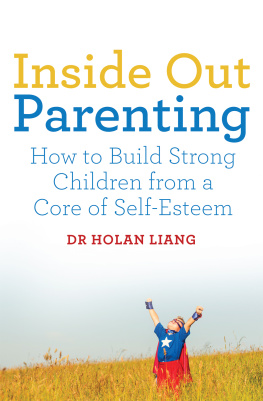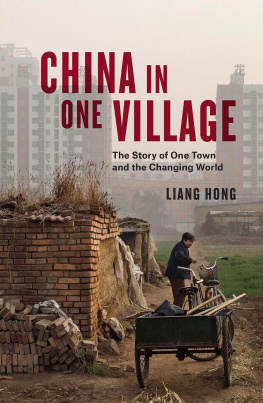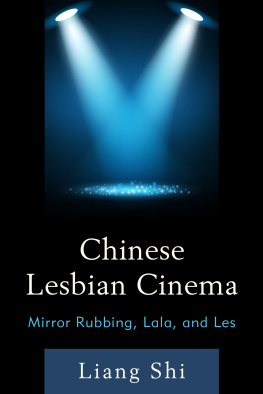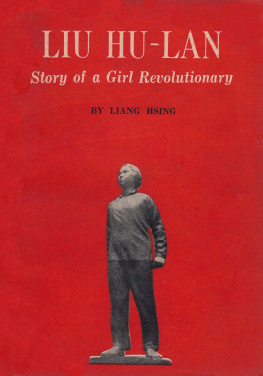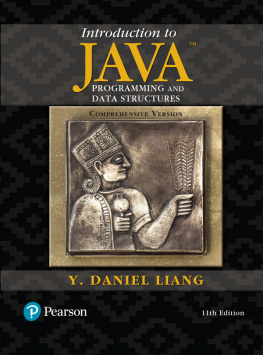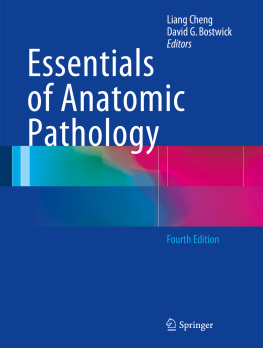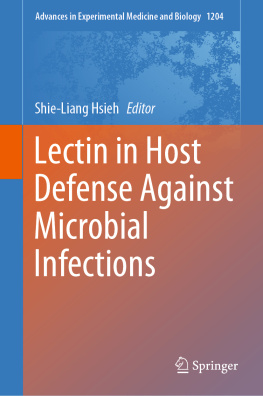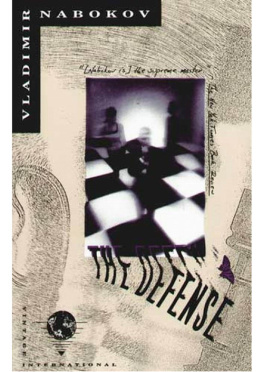Liang - T’Ai Chi Ch’uan for Health and Self-Defense (Vintage)
Here you can read online Liang - T’Ai Chi Ch’uan for Health and Self-Defense (Vintage) full text of the book (entire story) in english for free. Download pdf and epub, get meaning, cover and reviews about this ebook. year: 2011, publisher: Knopf Doubleday Publishing Group, genre: Religion. Description of the work, (preface) as well as reviews are available. Best literature library LitArk.com created for fans of good reading and offers a wide selection of genres:
Romance novel
Science fiction
Adventure
Detective
Science
History
Home and family
Prose
Art
Politics
Computer
Non-fiction
Religion
Business
Children
Humor
Choose a favorite category and find really read worthwhile books. Enjoy immersion in the world of imagination, feel the emotions of the characters or learn something new for yourself, make an fascinating discovery.

T’Ai Chi Ch’uan for Health and Self-Defense (Vintage): summary, description and annotation
We offer to read an annotation, description, summary or preface (depends on what the author of the book "T’Ai Chi Ch’uan for Health and Self-Defense (Vintage)" wrote himself). If you haven't found the necessary information about the book — write in the comments, we will try to find it.
Liang: author's other books
Who wrote T’Ai Chi Ch’uan for Health and Self-Defense (Vintage)? Find out the surname, the name of the author of the book and a list of all author's works by series.
T’Ai Chi Ch’uan for Health and Self-Defense (Vintage) — read online for free the complete book (whole text) full work
Below is the text of the book, divided by pages. System saving the place of the last page read, allows you to conveniently read the book "T’Ai Chi Ch’uan for Health and Self-Defense (Vintage)" online for free, without having to search again every time where you left off. Put a bookmark, and you can go to the page where you finished reading at any time.
Font size:
Interval:
Bookmark:


First Vintage Books Edition, September 1977
Copyright 1974, 1977 by T. T. Liang
Foreword Copyright 1977 by Paul B. Gallagher
All rights reserved under International and Pan-American Copyright Conventions. Published in the United States by Random House, Inc., New York, and simultaneously in Canada by Random House of Canada Limited, Toronto. Originally published by Redwing Book Company, Boston, September 1974.
Library of Congress Cataloging in Publication Data
Liang, T. T.
Tai chi chuan for health and self-defense.
1. Tai chi chuan. I. Title.
GV505.L5 1977 796.8159 77-76553
eISBN: 978-0-307-78725-5
v3.1_r1
Tai Chi Chuan or Supreme Ultimate Boxing is one of the finest products of Chinese philosophy and culture. Based upon the principles of the I Ching and the philosophy of Lao Tze, Tai Chi Chuan is a system of rounded, fluid, balanced movements to be practiced daily for health and peace of mind. When the movements have been mastered, ones intrinsic energy developed, and ones equilibrium stable, the movements and postures of Tai Chi can be employed to neutralize aggressive actions directed at the self and to counterattack.
Clearly, this book is not intended as a teach yourself manual of Tai Chi for the rank beginner, even though beginners can profit from studying many of the treatises in this book, particularly the translations of the Tai Chi Chuan Classics and the Ten Guiding Points. It is presumed that the reader will be acquainted with the rudimentary facts about Tai Chithat the complete long style sequence of movements consists of 81, 108, 128, or 150 forms, depending upon the method used to count them; that all movements are relaxed and circular, directed by a calm yet concentrated mind; and that oral guidance by a competent teacher is required for anyone seriously interested in pursuing the study of this art.
Master T. T. Liang based his study and teaching of Yang Style Tai Chi squarely upon the Tai Chi Classics, a group of writings containing the fundamental principles of the art. The three major texts known collectively as Classics are the Tai Chi Chuan Classic, attributed to founder Chang San Feng of the late Sung Dynasty; the Treatise on Tai Chi Chuan, attributed to Wang Chung Yueh of the Ming Dynasty; and the Mental Elucidation of the Thirteen Postures, also attributed to Wang Chung Yueh. These Classics appear in this book, translated in their entirety with a detailed original commentary by Master Liang. In this age of rapidly proliferating books on Tai Chi, many of which contain not even a reference to the Classics, the translations here will provide a basis for correct study. The commentaries are especially valuable, and to my knowledge this is the first time that such detailed commentaries on the Classics have appeared in English. Because of the increasing popularity of Tai Chi, Master Liang is especially anxious that students should base their study and practice upon the principles in the Classics, for the Classics are the indispensible foundation of the art. In proportion as ones practice deviates from the principles in the Classics, one will fall short of attaining the true meaning and function of Tai Chi.
In addition to the three major Classics there is an extensive literature on Tai Chi available to readers of Chinese. There are numerous essays, songs, poems, and aphorisms expressing principles of Tai Chi practice, either for health or self-defense. In Chinese books on Tai Chi one can also find a variety of stories dealing with the exploits of famous masters. Several such tales are included in this volume to give students the flavor of this area of Tai Chi literature. Though some of the stories, such as the story of the swallow landing on the masters hand, are well known and quite possibly grounded in fact, others tend toward what the Chinese call wild history. May the reader enjoy them, but not expect perfect factual accuracy.
Since few of the above-mentioned essays and songs have yet appeared in English, Master Liang hopes that this book will be a first step toward making some of this literature available to English-speaking people. However, many of the essays are terse and quite abstruse, so that even in Chinese books the original text is frequently elucidated in a commentary written by an experienced master. As Master Liang frequently said, unless one had acquired comprehension of the principles by practicing the art over a long period of time, he could not hope to understand the deepest meaning of the essays and Classics, many of which were written by former masters as an expression of their own profound comprehension of the principles of Tai Chi. Thus a mere translation does not suffice; the translator himself must have sufficiently ripened in Tai Chi practice to discern the true meaning of the texts. Master Liangs experience speaks for itself and his fine command of English makes these translations possible.
To date, few Tai Chi books in English have gone beyond the requirements of the beginner in learning the movements of the solo form sequence. Master Liang intended that this small book would be suitable for students who had learned the entire sequence of movements and wished to further their knowledge by beginning the study of the Pushing Hands exercises. Many of the texts, therefore, apply specifically to techniques and principles studied in Pushing Hands practice.
The Pushing Hands exercise consists of two partners executing the movements of Ward Off, Roll Back, Press, and Push (the first four of the eight Postures) in circular alternations. The remaining four movements, Pull, Split, Elbow-Stroke, and Shoulder-Stroke, are practiced in a more advanced form of two-man exercise called Ta L. Both of these exercises, as the texts indicate, are intended to develop sensitivity to the movements and intentions of another and an intimate awareness of ones own state of balance at every moment. The partners gradually learn how to neutralize attacks and to discover each others weak points for counterattacking. Pushing Hands and Ta L also teach the specific application and function of the eight basic movements.
The original texts were translated directly as they have come down to us. The commentaries on the Classics are Master Liangs own. The commentary on the Song of Pushing Hands is a translated commentary, modified frequently by Master Liangs own comments or observations. In a few places the interpretations given in this commentary differ from Master Liangs own way of teaching. Thus, there is a statement that one can at times entice an opponent to attack by using feints. This is in direct contrast to Master Liangs teaching in which he always emphasized that one should never take the initiative (i.e., make the first aggressive move). If the reader should discover any apparent inconsistencies in the texts, they may be taken as an indication of how different masters, at widely varying times and places, view the art in different ways, while not deviating from the central perspective provided by the Classics.
A few notes on matters covered in the translations may be in order for those readers not fully acquainted with the terminology in the texts. Tan tien is a Taoist term referring to a center of energy located approximately two inches below the navel. As one practices the movements, relaxing completely and breathing correctly without strain or roughness, energy gradually develops (i.e., Chi sinks) in the tan tien and in time will circulate throughout the entire body. Literally tan tien means Field of Cinnabar, another Taoist term referring to energies latent in man. The Field of Cinnabar is the place in which one can begin to produce the elixir of immortality.
Next pageFont size:
Interval:
Bookmark:
Similar books «T’Ai Chi Ch’uan for Health and Self-Defense (Vintage)»
Look at similar books to T’Ai Chi Ch’uan for Health and Self-Defense (Vintage). We have selected literature similar in name and meaning in the hope of providing readers with more options to find new, interesting, not yet read works.
Discussion, reviews of the book T’Ai Chi Ch’uan for Health and Self-Defense (Vintage) and just readers' own opinions. Leave your comments, write what you think about the work, its meaning or the main characters. Specify what exactly you liked and what you didn't like, and why you think so.

